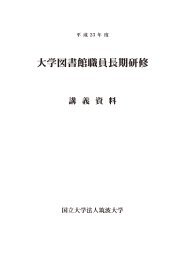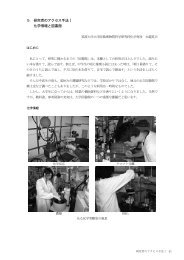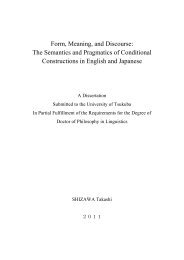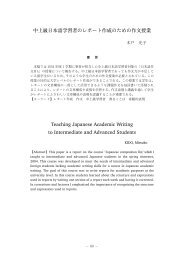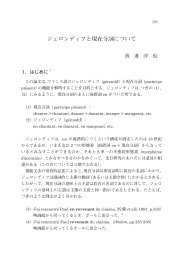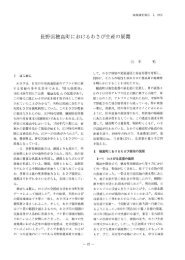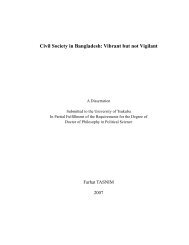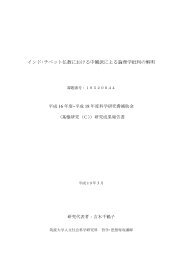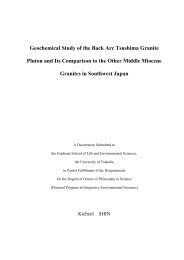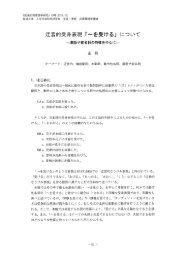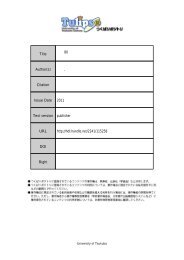Gamma Rays and CarbonIon-Beams Irradiation for Mutation ...
Gamma Rays and CarbonIon-Beams Irradiation for Mutation ...
Gamma Rays and CarbonIon-Beams Irradiation for Mutation ...
You also want an ePaper? Increase the reach of your titles
YUMPU automatically turns print PDFs into web optimized ePapers that Google loves.
etween the irradiation doses <strong>and</strong> the relative DNA content (Fig. 17)<br />
showed that the values from the three cultivars (‘Cavendish Enano’,<br />
‘Williams’ <strong>and</strong> ‘Orito’) showed an imperceptible variation in all the<br />
applied doses. However, a perceptible variation was possible to observe in<br />
‘FHIA-01’ when higher doses were applied. The variation of ‘FHIA-01’<br />
was better observed when a frequency distribution of the relative DNA<br />
contents was analyzed (Fig. 18). The analysis detected reduction of the<br />
relative DNA content when the irradiation dose was increased. The lowest<br />
value was 1.947 (96% of donor), observed at 300 Gy. These results suggest<br />
that deletion of DNA was occurred when high doses were applied in<br />
‘FHIA-01’, exhibiting a shift to the left, indicating loss of whole or part of<br />
chromosomes. Aneuploid is the mean having one or more complete<br />
chromosomes in excess of, or less than the normal haploid, diploid or<br />
polyploidy number characteristics of the species. Seventeen plants with<br />
lower DNA content were selected corresponding to the doses of 200 <strong>and</strong><br />
300 Gy.<br />
FAO/IAEA (2002) screened aneuploid mutants by flow<br />
cytometric analysis in irradiated banana plants. Aneupliod mutants can be<br />
detected through chromosome counts with rather time-consuming process.<br />
Results obtained by flow-citometry were compared to chromosome<br />
counting in meristem shoot-tip cells. It could be shown that flow<br />
cytometry is sensitive enough to detect aneuploidy in bananas. With such a<br />
sensitive <strong>and</strong> fast technique we are now screening routinely <strong>for</strong> aneuploid<br />
mutants in addition to screening <strong>for</strong> juglone resistance. Aneuploid mutants<br />
would be important tools <strong>for</strong> basic research in Musa.<br />
Dolezel et al. (2002) reported that flow cytometry have been<br />
used to determine ploidy levels of Musa accessions. Flow cytometric<br />
ploidy assay involved preparation of suspensions of intact nuclei from<br />
small amount of the leaf tissue <strong>and</strong> the analysis of fluorescence intensity<br />
42



